Office Furniture Buyer's Guide
Buying office furniture can be a complex, drawn-out, and frustrating experience. But it really shouldn’t be.
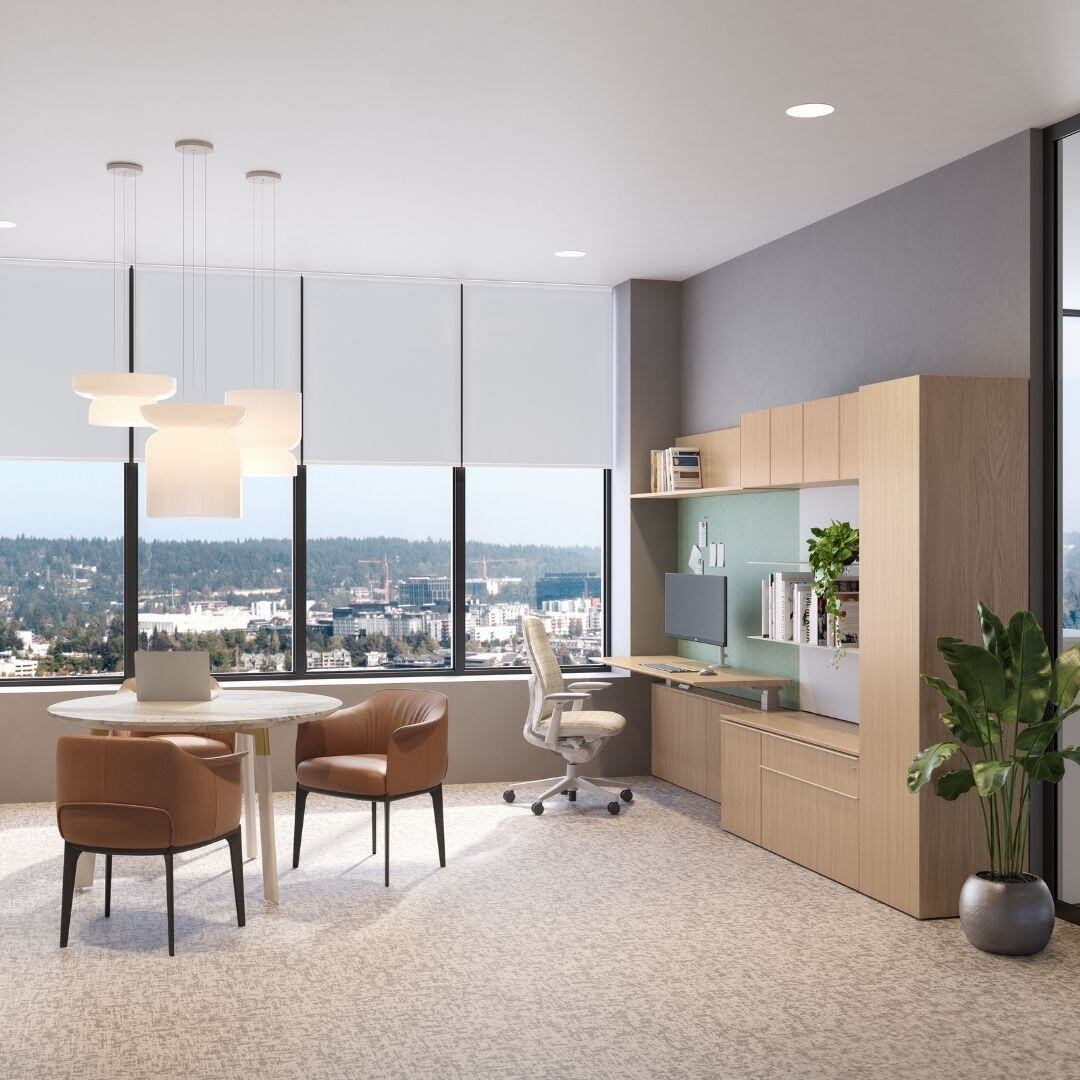
Yes, the products are highly customizable, and the options are virtually limitless. Yes, lead times can often drag on for weeks or months depending on the product and manufacturer. That isn’t why the process of buying office furniture can sometimes feel so painful though.
Buying office furniture can be hard because it is difficult to find the information you need upfront before being pulled into a consultation with a salesperson.
We decided to fix that. Enter, the Ultimate Guide to Purchasing Office Furniture. In this document, we will answer the questions we are asked most frequently about buying furniture so that you can do the research you need to feel comfortable about your next purchase.
Factors to Look for When Choosing Office Furniture
Depending on your situation, there are many different factors to keep in mind when choosing your office furniture. We feel this list of potential factors though can be distilled down to just seven critical criteria.
Aesthetics
The look of your workplace can play a critical role in the success of your company. Studies have shown that an aesthetically pleasing office can help with attracting and retaining top talent.
The culture of your team and workplace is essential when trying to recruit and retain, investing in the space where your people spend one-third of their daily life is an important signal that you value them, their time and their health.
Ergonomics
The science of designing a workplace with the abilities and needs of your employees in mind, also known as ergonomics, should be factored into every piece of office furniture you purchase.
From footrests to adjustable monitor arms or chairs that properly support the lower backs of your employees, ergonomics can have a significant impact on the productivity, health, and happiness of your team members. Choosing office furniture built with ergonomics in mind is essential for any efficient workplace.
Adjustability and Flexibility
Employees come in all different shapes and sizes, which is why the office furniture you choose needs to have the flexibility required to meet their individual needs. Many desks and table solutions are height adjustable to ensure employees can be productive while maintaining proper posture.
Likewise, the office chairs you choose should include features such as adjustable arm, head, and backrests. Investing in furniture that can be adjusted to the specifications of your employees can help keep everyone in the office comfortable and focused on their work.
Impact on Employee Wellness
The right office furniture can greatly impact the lives of your employees. Several studies have found that choosing office furniture that is both comfortable and ergonomically considered can have a noteworthy impact on employee happiness, as well as their productivity.
Warranty
Office furniture is a substantial investment, and you want to be sure that dependable warranties back the pieces you choose. This will ensure that if you experience an issue with your office furniture, you’ll be able to have it dealt with quickly and at a reasonable cost.
Multi-functionality
To maximize your budget purchase furniture with multiple functions in mind. For example, lounge or storage furniture can also be used for collaborative or meeting spaces.
Many desks are designed primarily to function as single employee workstations, but can easily be transformed into collaborative hubs. Similarly, tables can be designed to move around the office as they’re needed, making them perfect for in-house presentations, training programs, strategy sessions in the board room, and much more.
Brand Reputation
When choosing office furniture, it’s essential to work with a brand that has earned a reputation as a leader. The reason is simple: choosing the best will help bring the best out of all your employees.
Always choose products from office furniture brands who are all known for using quality building materials and are committed to delivering the best furniture in an environmentally responsible way.

Visit Our Online Store
Take the work out of furnishing your workspace.
Browse through countless options and choose ergonomic office solutions that make you feel best from the comfort of your home (or anywhere). Create your team or home office in a few clicks and have your items delivered straight to your door.
The Furniture Buying Process
The process of buying office furniture can be boiled down to nine key stages: product selection, drawings, finish selection, quote supplied, customer sign-off, order entry, manufacturing, shipping and finally, delivery & installation.
Let’s break down each of these stages to explore what needs to be accomplished to continue through the process as well as estimate how long you should expect to spend working through each step.
Product Selection - one week (highly variable, but this is a reasonable expectation): The first step when purchasing office furniture is to select your furniture. For a simple order, this stage could take a mere day or two. For a large project or if multiple on-site meetings are required to get a clear grasp of your needs and determine the right solutions, this step could take a few weeks. As the customer, you have a high degree of influence over how long this step will take.
Drawings - 1 to 2 days per revision:
In this step your desired products and floorplan have been given to our CAD team to complete CAD drawings of the configuration which ensure that all the necessary parts are included in the order, everything will fit with your floorplan restrictions and to provide a blueprint for the installation team.
A skilled CAD team can turn around a set of revisions in one to two business days; the primary factor determining the length of this step is how many sets of alterations or changes you request.
Finish Selection - 1 to 3 days:
Once your furniture has been selected and your layout configured comes the fun part; picking finishes! Your Account Manager will present you with finish options for your chosen products, how long you wish to consider your options before making a final selection will be the main factor limiting the amount of time this step can take.
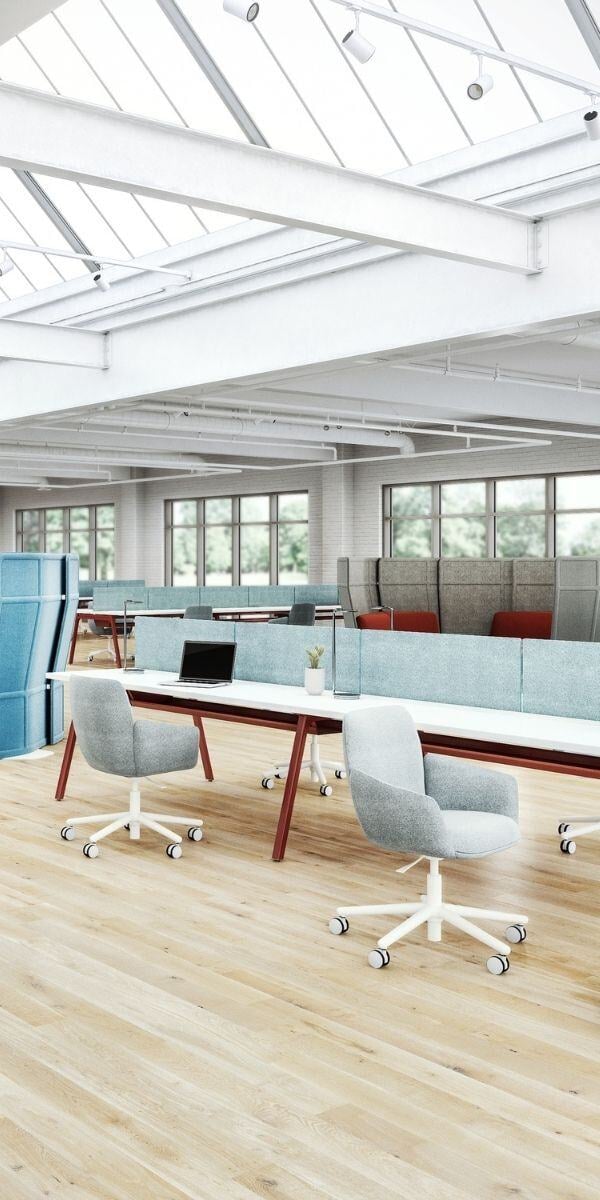
Quote Supplied - 1 to 2 days: After all the finishes have been selected, and the drawings finalized, it’s time for your Account Manager to prepare a quote. This typically takes one to two business days, depending on the size and complexity of the order.
Customer Sign-Off - 1 to 3 days
In this step, the customer must sign off on their received quote and confirm that they want to proceed with placing the order. If all internal stakeholders who must approve the purchase have been kept up to speed during the previous four steps, customer sign-off can be much faster. Progress through this stage is entirely in the customer’s hands.
Order Entry - 1 to 2 days:
Once the customer has signed off on their quote and returned it to their Account Manager, a Furniture Sales Coordinator (FSC) will then process the order. The FSC will create a file in the dealer’s project management and accounting system as well as order the product from the various manufacturers.
Manufacturing - 4 to 5 weeks:
After all the manufacturers have acknowledged the order and provided their estimated ship dates, your FSC will provide you with an update as to when they expect the product to arrive. Unfortunately, this is the step in the process where both the dealer and customer have the least control over time frames.
Most manufacturers operate on a Just-In-Time manufacturing system and do not begin building product until they have received an order. Typical manufacturing lead times are four to five weeks for standard products, but customized “special” orders can stretch out much further, and if you are ordering a designer product or furniture that is manufactured overseas you can experience lead times of as high as 12 or even 16 weeks!
One way to cut down on lead times is to order off a manufacturer’s “Quick Ship” list. Manufacturers often create a Quick Ship list of some of their most popular products with a limited selection of finishes and promise to either keep them stocked or prioritize them in manufacturing. Quick Ship lead times are usually one to two weeks, depending on the manufacturer.
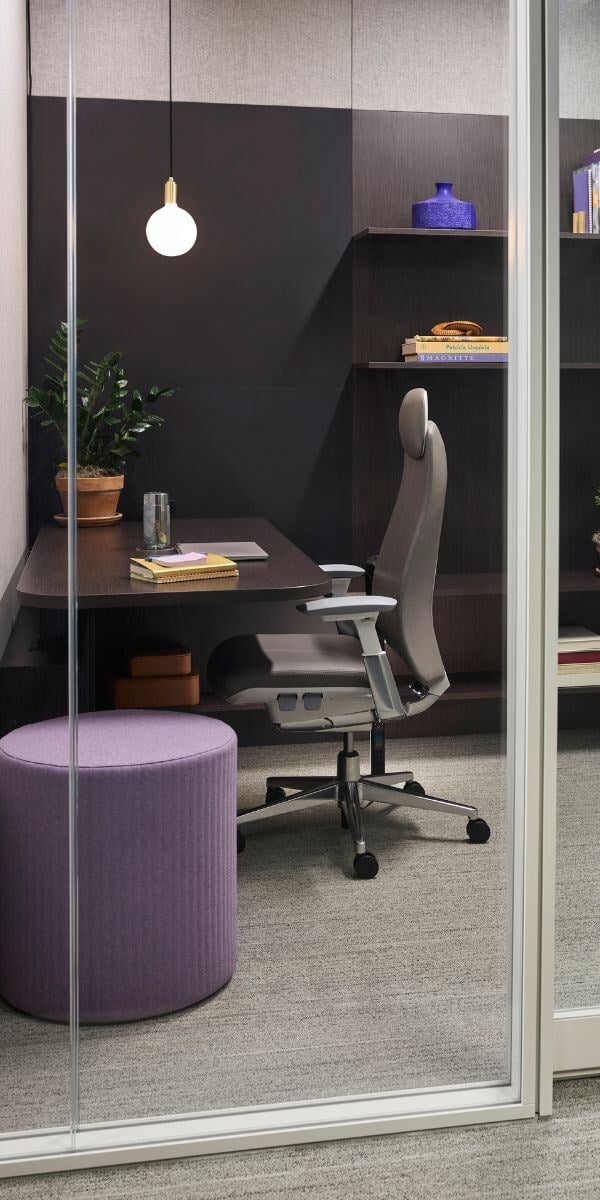
Shipping - 1 week:
The leading commercial office furniture brands sold in Canada are manufactured within North America, so it usually takes one week for your dealer to receive the product. As with the manufacturing stage, there is often little that either the customer or the dealer can do to reduce the length of this stage.
Delivery and Installation - 1 to 5 days:
When your dealership has received all your product from the manufacturers, your FSC will provide you with an additional update letting you know that your product has arrived and that installation is being scheduled.
Typically, delivery and installation will take less than one week. However, since delivery must be coordinated with the customer, delivery could be scheduled sooner or later depending on the availability of both an installation team and the customer’s facility. Timely scheduling is depending on excellent communication and cooperation between the dealer and the final customer.

How Soon Will I Receive My Furniture?
All in all, you should expect it to take between seven and ten weeks to buy office furniture from the first conversation with an Account Manager until your furniture is fully installed.
If trying to estimate how long it will take to receive your furniture from the date you placed your order, you should budget five to seven weeks.
To learn more regarding furniture lead times during or post-COVID-19, click here.
Office Furniture Costs
Price doesn’t always equal the value received. To make sure you are buying quality furniture, without overpaying, you need to understand how much to budget for your next furniture purchase.
Task Seating
Ultimately what determines how much you should spend on an office chair is how much you plan on using the chair. Are you looking for a chair that you can keep using for years to come? Do you plan on using the chair every day? Will you be sitting in the chair for the bulk of the workday? If you answered yes to these questions, you should budget between $450 and $1000 for a task chair.
So why are some chairs more expensive than others? Here are the three factors that can significantly impact a chair’s final price point:
1. Durability has a price
If a chair retails for over $450, you should expect it to have a significant warranty and a usable life of at least five to ten years.
2. More features mean more money
There are dozens of ergonomic features and customizations available these days, but an upcharge of $25-50 per upgrade accompanies many.
3. Finish choice can significantly impact the final cost
The list price is almost always for the standard-grade finish and not for more premium finishes. For example, if you upgrade the base of a task chair from plastic to polished aluminum and the fabric from upholstery to leather, the cost of the chair can double.
Desk
The typical desk these days is a 6’x6’ L-shaped configuration case good. You should typically count on spending between $900-$7000 for a 6’x6’ desk. While the range is rather broad, ultimately, it can’t be narrowed until you make two choices:
- How much storage do I want to incorporate into my desk?
- What kind of finish do I want / Do I want a laminate or veneer work surface?
Storage
The amount of storage capacity incorporated into a desk or workstation is a significant factor in its overall cost. When deciding how much storage you want your desk to have, take the opportunity to think about how much you actually need.
Finishes
There are two common types of finishes for desks these days, laminate and veneer; your choice can have a significant impact on the final price you pay. A veneer is unmatched in appearance and selection options but is very much priced as a premium option. Laminate is a lower cost and lower maintenance option but does not have quite the same aesthetic impact as a veneer worksurface.
Workstation
Similar to desks, workstations have shrunk in size in recent years and are most commonly seen in 6’x6’ L-shaped configurations although the nature of systems furniture does allow for a lot of creativity in the specific layout design. A safe budget range would be approximately $1800-$5000 per workstation.
Once again, where you land within this range is primarily determined by how much storage you desire and what finishes you select.
Storage
As with many things, the more you add, the more it’s going to cost. Before committing to a particular configuration, we suggest you take the opportunity to evaluate just how much storage you (and your team) need at your workstation.
- Do you need to have a space for storing binders at your desk or can you use a shared bookcase instead? What about paper documents and files?
- Do you need that storage tower for your coat and umbrella, or would it be more efficient for the office to share one centrally located closed?
Finishes
Here are a couple of the frequent upgrades that many new customers may not realize can quickly run up the cost of your workstation(s):
- Upgrading the panels from a single colour fabric to laminate or veneer
- Built-in writeable whiteboard surfaces on the panels
- Adding a glass (clear, glazed or framed) to the top of the panel for a little additional auditory privacy while maintaining the same open visual feel.
Storage & Filing
Since storage furniture can come in so many shapes, configurations and sizes, providing an accurate estimate are quite difficult. So, instead of giving you one price range as we have with other furniture, we are going to give you a price range for a few of the most common storage units our customers buy: mobile pedestals, wardrobes, and lateral files.
A mobile pedestal is a small storage unit that usually slides underneath your desk or workstation. For a mobile pedestal, you should budget $460-$750.
Wardrobes are full-height units that are often used for coats, boots and other large objects. You should budget $750-$1500 for each wardrobe.
The third common storage unit is the stereotypical lateral file, or as it’s more commonly known, filing cabinet. A budget of $550-$1300 will cover the typical lateral file.
As with most other office furniture, determining where you land within these ranges depends on how large your units are, how they are configured, and what finishes you select. A wood veneer-panelled wardrobe will cost much more than one built from pressboard and laminate. A popular configuration with our customers is for the units to be fabricated with painted steel but have the fronts or sides covered with laminate panels as this balances sturdy construction with a great aesthetic.
Most importantly, though, when considering purchasing new storage furniture, the number one question you need to ask yourself is: what exactly do I want to store? Answering this question will help guide which furniture is the best fit and how it should be configured.
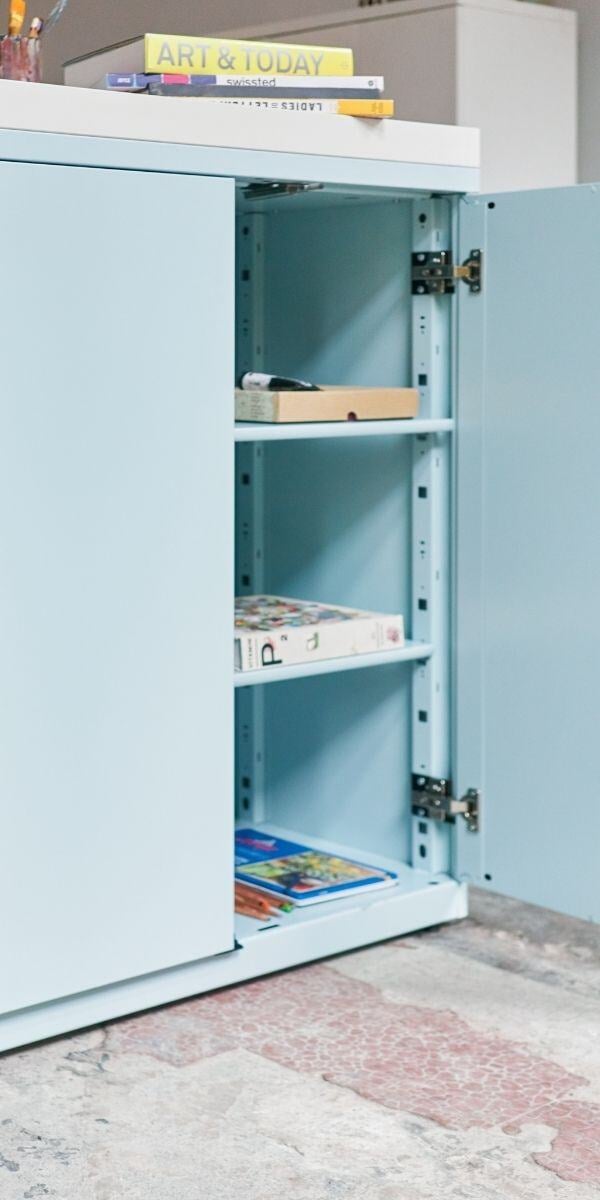
Leasing vs Buying Office Furniture, the Pros and Cons
Most businesses are used to the idea of leasing their vehicles, office space or multifunction printers (copiers) What many don’t realize, however, is that they can also lease their office furniture. So for your next purchase, instead of investing your business’ cold hard cash should you lease your office furniture? Let’s take a look at the pros and cons.
Six Benefits of Leasing Office Furniture:
- Conserving cash – Managing cash flow is critical for all organizations, but particularly ones that are experiencing rapid growth. Leasing can help you redirect capital away from this purchase and towards those other investments that can help your company grow.
- Avoid debt – Leasing your furniture rather than financing its purchase can help your business conserve your credit or avoid taking on additional debt.
- Reduced tax burden – Depending on where your business operates, your lease payments may be tax deductible, reducing your overall tax burden.
- Enjoy without ownership – A fair market value lease allows you to enjoy all the benefits of your new office furniture without having to assume all the time or financial costs associated with owning the furniture in perpetuity. At the end of the lease, you can then decide to buy out the furniture or return it for something newer!
- Lease to own – Alternatively, a nominal buyout lease (often $1 or $10) is a tactic to smooth out the costs of acquiring the furniture over several years without taking on significant debt upfront.
- Predictable fixed payments – The fixed payments of a lease are protected against market fluctuations and can be easily forecasted for the duration of the lease contract.
Three Potential Risks When Leasing Office Furniture
- Fine print – Always read the terms of your lease carefully. If you choose not to buy out the furniture at the end of the lease period, are you required to remove or ship the product anywhere? Are there any hidden fees?
- Buyout prices – How is the lease buyout structured? Is there an additional fee if you choose to buy out the furniture? What if you choose to buy out the furniture early?
- Furniture quality – Some less reputable lessors may try to pass off lower quality furniture to a lessee since the lower upfront sticker price may reduce due diligence on the part of the buyer.
Ultimately, leasing is not the right answer for every business or every situation. Regardless of how the purchase is structured or financed, what is most critical is that you choose to partner with a trustworthy furniture supplier who will ensure you are getting a quality product at a fair price.
Office Furniture Warranties
Office furniture warranties can be murky when compared with the warranties of other products. After all, most warranties guarantee that the product will continue to function for a defined period, but a table can take quite a bit of abuse before it stops functioning as a table. Just how much damage constitutes regular wear and tear and how much justifies a warranty claim?
Does sun damage to your fabric qualify for a warranty claim? What about if your brand-new chair looks just as promised, but isn’t comfortable?
Add in the fact that many furniture manufacturers will sell additional extended warranties on top of their standard warranties and you have a recipe for confusion.
From our experience, we have found that the best way to view a furniture warranty is as a representation of the quality of that furniture. Does the manufacturer back up their product with a long-term comprehensive warranty or does it offer a brief window of eligibility with plenty of legalese exceptions and conditions?

What Warranties Are Available for Office Furniture?
There are three major types of warranties in the office furniture market.
Full Warranty: Full warranties are rare. This is an unlimited product performance guarantee that effectively lasts forever. Anyone can send in a product with a full warranty for repair or replacement, and the manufacturer guarantees that it will perform the service, often with a “no paperwork, no questions asked” policy.
Limited Warranty: These are warranties subject to manufacturer-determined limits. The most common form of restriction is on the duration of the warranty – for example, a “ten-year limited warranty.” But manufacturers can also set other limits to their guarantees.
For office furniture, it is unusual for manufacturers to establish performance limits for warranties, but it does happen. One example is weight limits for desks and load-bearing furniture.
Express Warranty: An express warranty is any performance guarantee made by a company about its products. This includes advertising messaging, promotional messaging, and even promises made by salespeople – if they write them down.
If an office furniture salesperson promises that a desk can withstand up to 150 pounds of dead weight and you convince that person to write that statement down on the company invoice, you have an express warranty on desk performance.
In that case, you can claim your desk warranty if a 140-pound person sits on the desk and causes it to collapse. For this reason, furniture providers are generally cautious not to make express warranties about their products.
Common Problems with Office Furniture Warranties
A single manufacturer may provide a different warranty for each of its products. This means that even though your furniture is primarily all the same brand, your seating, casegoods, workstations and lounge furniture may all carry their own warranties.
Any manufacturer will guarantee its furniture will arrive free of blemishes and damage; details can change beyond this. For example, if you are purchasing upholstered furniture, you should verify that the warranty covers the stitching.
Unlike vehicle warranties, few dealers can complete your repairs on-site and will usually need to send your furniture back to the manufacturer in the event of a warranty claim. It is unlikely you will receive a “loaner” desk while your broken desk is being assessed or repaired by the manufacturer, which means you could end up missing furniture for weeks or even months.

What About Extended Warranties?
If you are contemplating purchasing an extended warranty policy, these are the questions you should consider:
- Are shipping and logistics included in making an extended warranty claim?
- Does the extended warranty cover performance-related issues?
- Does the extended warranty policy cover express warranty terms already guaranteed by the manufacturer?
A reputable furniture provider will always offer a comprehensive warranty at no extra cost. Additionally, its salespeople will patiently explain the terms and conditions of the warranty without relying on confusing language. As a general rule: the better the warranty is, the better the furniture must be.
Unlike vehicle warranties, few dealers can complete your repairs on-site and will usually need to send your furniture back to the manufacturer in the event of a warranty claim. It is unlikely you will receive a “loaner” desk while your broken desk is being assessed or repaired by the manufacturer, which means you could end up missing furniture for weeks or even months.
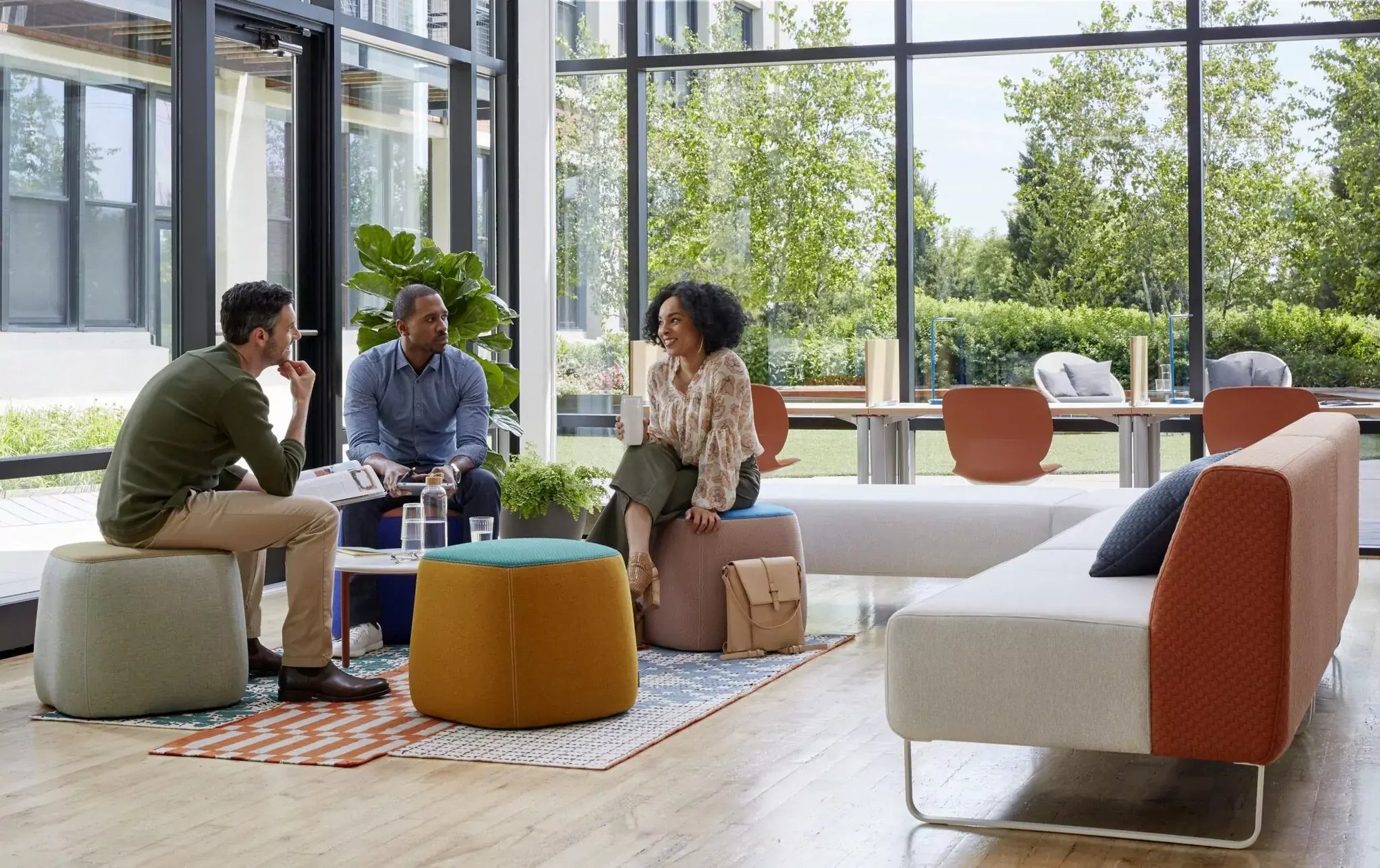
What to Look for in an Office Furniture Provider
Choosing where to buy can be as important as deciding what to buy. When purchasing office furniture, you’ll want to partner with an organization that understands your needs and will go above and beyond to ensure you achieve your goals.
There are many office furniture dealers and resellers out there, so it’s worth it to take the time to learn about your options to decide which is right for you. Here are a few things to keep in mind when choosing an office furniture partner:
Measurable Customer Service
Everyone claims to offer excellent service, but very few can prove it. Rather than just taking a provider’s word for it, investigate whether they have industry certifications or customer feedback to support their claims. We believe it is important to measure customer service, and here are a few examples of ways to measure customer satisfaction.

Has your furniture provider been awarded Haworth’s Best In Class?
Haworth’s Best in Class program independently scores dealers on their Customer Satisfaction, Sales, Operations, and Finance and Administration. Only 10 percent of Haworth dealers in North America attain the highest level of recognition and are awarded Best in Class. Office Interiors has been named Best in Class in 2012, 2014, 2016, 2017, 2018, 2019, 2020, 2021 and 2022!

What is your furniture provider’s Net Promoter Score (NPS)?
The Net Promoter Score system is a tool that measures customer loyalty by asking customers whether or not they would recommend the product and services of a company to a friend. An NPS can be as low as -100 and as high as 100. Typically, any score above zero is considered good, while a score over 50 is considered excellent. Customers are surveyed after every interaction with Office Interiors, and we are thrilled to have a grade of 89.98 out of 100.

Does your furniture provider have any Consumer Choice Awards?
Consumer Choice Awards uses a third-party research firm to poll thousands of consumers and businesses to determine the top provider in each product category in a specific market. Office Interiors has been awarded the Consumer Choice Award in both the office furniture and imaging categories every year since the Consumer Choice Award debuted in Halifax in 2010.
Local Support and Sevices
The most important part of any furniture purchase is what comes after the sale. Regardless of how much furniture you buy, your office furniture provider should always be there for you, even after your furniture is paid for, delivered, assembled, and installed.
Some furniture providers outsource the service and installation of their products. Unfortunately, this means your provider has little to no control over what happens after the initial sale, leading to issues for you down the road. If your furniture breaks, there may be no way of fixing it.
If you are the type of customer who wants a hands-on, timely approach to maintenance requests, then you will want to choose a supplier who has a local service team within your region.
At Office Interiors, we have a local service team at your disposal for every one of our locations. This not only means that our service team is in the same time zone as you but can also respond to your requests much faster. You can count on our team of local experts to deliver personalized, on-site services because they know the community you operate in.
Your furniture partner should provide you with a dedicated customer support contact. Not only does this provide one point of contact for any questions that arise during the ordering, scheduling and installation phases of a project, but in the long term, they will also be able to facilitate any warranty claims or service care.
Local and timely after-sale support is an important box to tick off when it comes to selecting the right office furniture provider, even if they don’t necessarily offer the lowest prices. Remember, it is an investment that will save you valuable time and ensure minimal downtime so you can focus on growing your business.
Custom Design Capabilities
A great office furniture provider takes the time to listen to your specific needs and then helps you develop a custom plan to meet those needs. Partner with a provider that doesn’t believe in a one size fits all approach. No two offices are exactly alike, so no two solutions should be exactly the same.
A good furniture provider will offer you a full consultation and then deliver the custom solution that is right for you. The right partner understands that your relationship doesn’t end as soon as a payment is made. In fact, they realize that a purchase decision is only the beginning.
They will offer a team to support you through the entire process including dedicated customer service, installation services, as well as ongoing support after your installation is complete to ensure continue having the best experience possible in your redesigned office.
Full Service Offerings
Organizations that value the customer experience understand that your relationship doesn’t end as soon as the purchase order is signed. Closing the sale is only the beginning of the relationship.
Any great office furniture dealer will have its own team of manufacturer-trained installation technicians rather than relying on an outsourced team of contractors. An in-house team will allow your provider to more accurately control installation scheduling, hold project management meetings, and ensure any deficiencies are quickly addressed.
Your furniture partner should also provide you with a dedicated customer support contact. Not only does this provide one point of contact for any questions that arise during the ordering, scheduling and installation phases of a project, but in the long-term, they will also be able to facilitate any warranty claims or service care.
Customer-focused organizations provide seamless installation, dedicated customer support and long-term furniture warranty and service care.
Discusses Budget Early
It doesn’t matter how great a provider’s products or service is if they are priced out of your budget. A great furniture provider understands this and is willing to discuss price and budget upfront.
Receiving the quote should be a formality to finalize the exact price of your configuration; the price should never be a surprise.
Able to Offer Multiple Financing Options
Many businesses prefer to purchase their office furniture outright, but leasing is a growing trend in the industry. Your choice of furniture provider should not restrict your options when choosing what financing method is best for your business.
Carries Reputable Brands
We have all heard the old expression, “you are the company you keep.” Well, in the office furniture industry it would be accurate to rephrase it as “you are the brands you carry.”
If an office furniture provider carries brands with poor warranties or negative customer reviews, they are going to be hard-pressed to deliver great customer experiences.
Strong Values
When finding the right company to do business with, we think it’s important to investigate what that company does after office hours. Seeking a furniture provider with a strong set of core values that they implement and hold their employees accountable for, goes a long way. At Office Interiors, our core values are focused on the following:
- Our customers
- Our people
- Our community
- Our environment
- Integrity
- Results
We're Here to Help
At Office Interiors, we believe that buying office furniture shouldn’t be a painful or confusing experience. Hopefully, this article has helped answer some of your questions about this process but if you still have questions that we didn’t address let us know in the chat feature on the bottom right of the page!
If you feel ready to sit down and discuss your situation in detail, request your FREE consultation where we go over your needs, goals, and budget.

